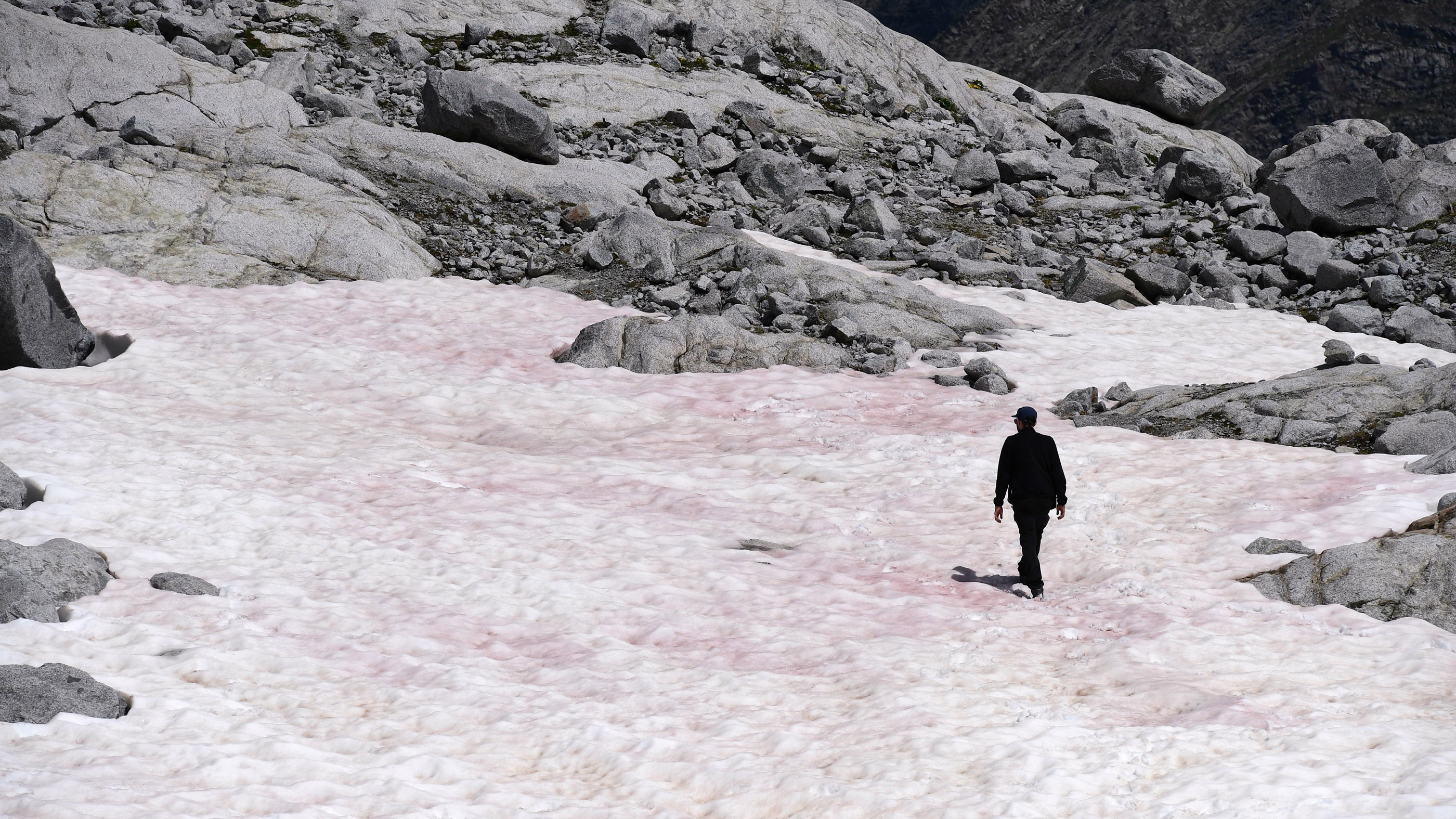Pink 'watermelon snow' threatens major Italian glacier
This is bad news for the historic icy site.

A pink invader is threatening Italy's massive Presena glacier.
The Alpine glacier, once the site of World War I battles between the Kingdom of Italy and the Austro-Hungarian Empire and now an outdoor and skiing destination, seems to have caught a bad case of "watermelon snow," according to a CNN report. The pink hue comes from algae growing on the ice. Though the itty-bitty algae doesn't damage the glacier directly, it makes the normally white surface darker, allowing it to absorb more light from the sun. That absorbed light heats the glacier, speeding up its rate of melt. At 10,068 feet (3,069 meters) above sea level, the glacier has lasted intact for millennia through the summers.
Biagio Di Mauro, a researcher at the Institute of Polar Sciences at Italy's National Research Council, told CNN that the microscopic plant species Chlamydomonas nivalis likely caused the sudden pink hue. The algae is common in the Alps, but low winter snowfall seems to have combined with high spring and summer temperatures to create ideal conditions for a major bloom.
Related: Time-lapse images of retreating glaciers
Presena glacier conservators have been using massive sheets of textiles in the summer to reflect light off the glacier and back into space. But that does not cover all the ice.
Glaciers all over the world are shrinking at astonishing rates due to climate change. In the United States, many major glaciers that have existed for thousands of years, could be gone within decades according to the U.S. Geological Survey (USGS).
Sign up for the Live Science daily newsletter now
Get the world’s most fascinating discoveries delivered straight to your inbox.
The USGS notes that glaciers are often integral parts of their local ecosystems, providing cool water for fish downstream, supporting agriculture and providing key drinking water sources for human populations. Without glaciers, water would be more scarce, even as droughts and wildfires become more common due to climate change.
Related: The vanishing glaciers of Europe's Alps
One of the most significant retreating glaciers in the world is Denman glacier in Antarctica, Live Science previously reported. The 12-mile-wide (20 kilometers) ice stream to the continent's east has retreated 3 miles (5 km) between 1996 and 2018. A canyon below the glacier may be accelerating Denman's retreat, risking a feedback loop that could entirely melt the giant block of ice. If all of Denman's ice flowed back into the ocean, sea levels would rise an average of 5 feet (1.5 m) worldwide.
Originally published on Live Science.











